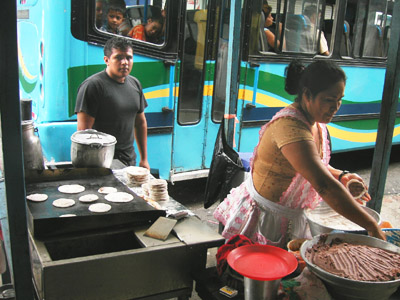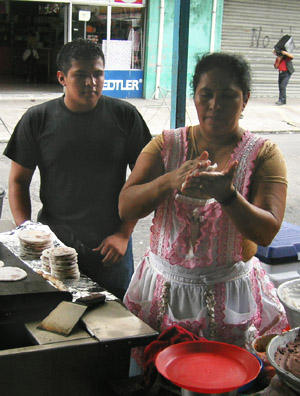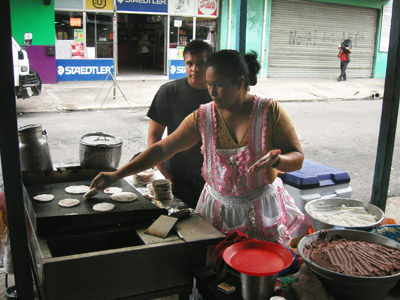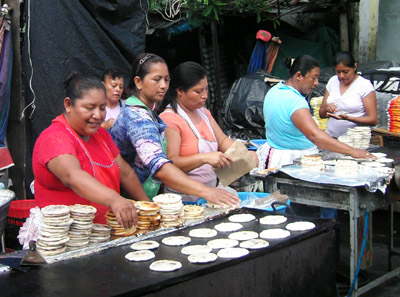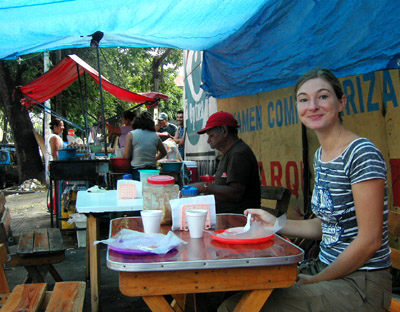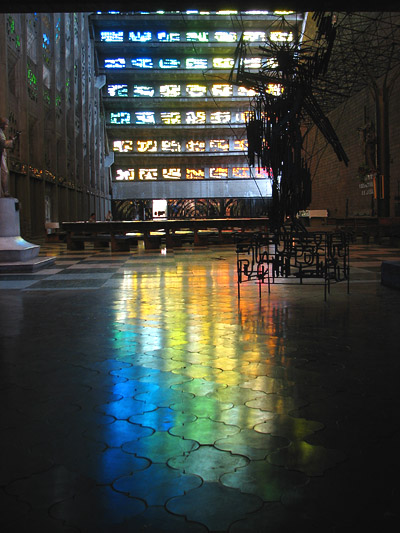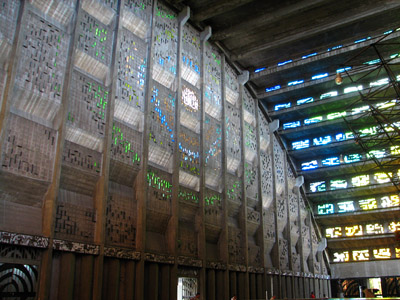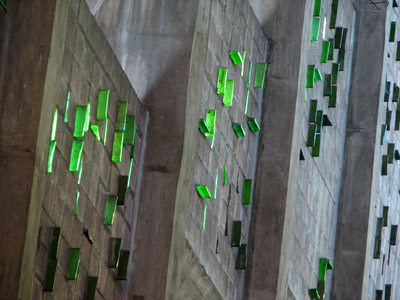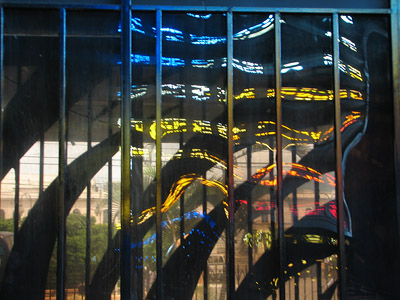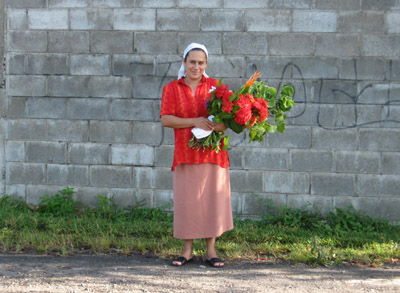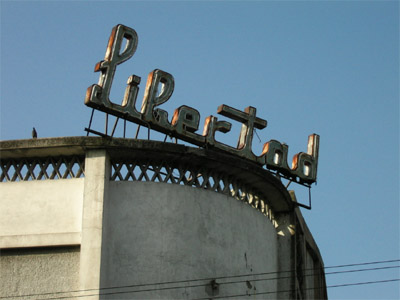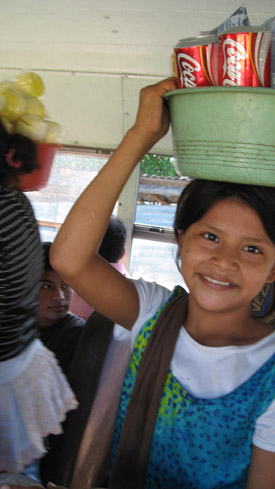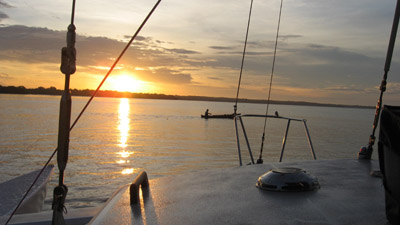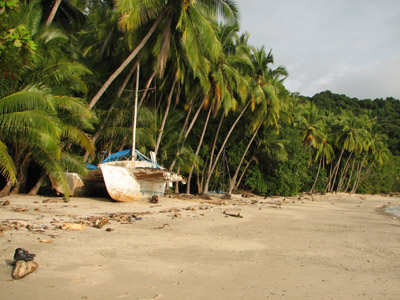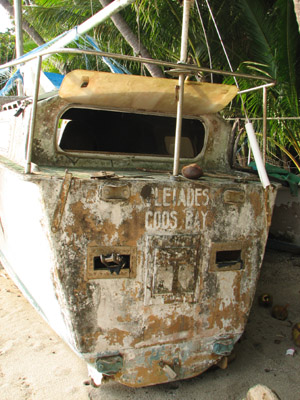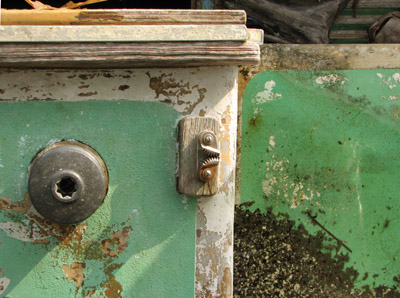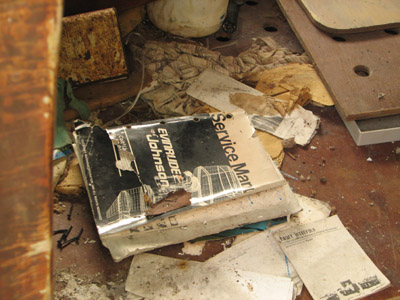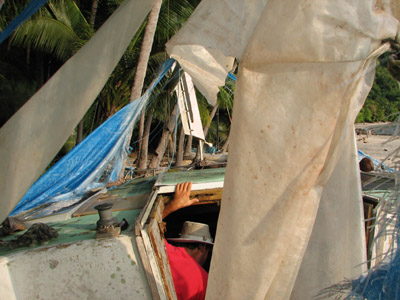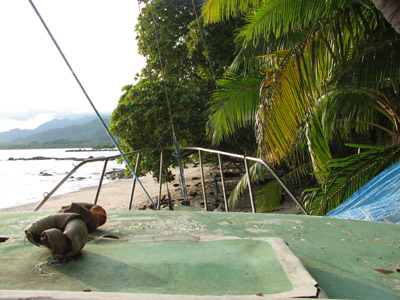Parque Manuel Antonio
Tuesday, November 21st, 2006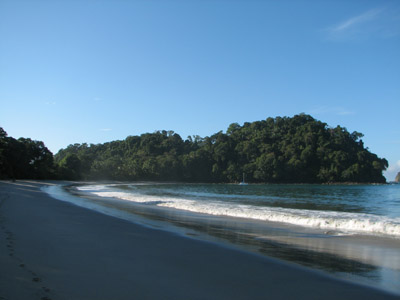
In spite of, or probably because of, Margo’s (a.k.a. Mrs. Charlie’s Charts) less than ecstatic review of the Parque Nacional Manuel Antonio (i.e., gobs of people and she only saw white faced monkeys, wah!), we were terribly excited to arrive and get our anchor down. We were promptly rewarded with goodies too; the anchorage is right in the park, right off the prettiest beach, right in the lee of the spectacular “Punta Catedral,†and within clean earshot of the howler monkeys. There was also one funky odor that was a combination between mushroom and skunk. The entire park smelled like it and that first night had me following my nose all over the boat, sniffing at our “clean†laundry, at the dishtowel, at the pile of foul weather gear stacked on the bunk, at the bunk itself until I was mostly convinced the smell did not originate on the Time Machine.
We hopped in the water and swam to the beach to check out the late afternoon scene. People were set up with towels and swimming all up and down the beach (a fair amount of people, but not enough to be horrible). We wandered across the narrow jungly land spit over to the other side, where there was another lovely beach littered with tourists. Then the ranger started blowing his whistle: 4pm, the park is now closed! He herded people out with his whistle and we walked back to the other side to swim back out to the boat. Halfway out Joshua looked back to see one of the rangers standing on the edge of the sand looking after us, shrugging his shoulders to say “what the hell?†Ha ha! Safe back on the boat, we hung out and made micheladas with the last of our beer. We noticed that there was a crowd of mixed gringos and ticos (Costa Ricans) left on the beach, screaming and swimming and generally having a dandy time; the rangers totally ignored them and they stayed long after all the tourists left. After a while some of them swam out to the boat to see what was up with us. They were all volunteers, mostly young people from the UK, and Costa Rican guides; they all lived in a house inside the park. “Oh the park is gorgeous! You’ll love it! TONS of wildlife!†they said. I was stoked. Then we found out that the next day (Monday)–the day we thought we’d be heading in to do all that national park stuff–it would in fact be closed. Damn!
Ah well. Maybe we’d head into Quepos and restock our beer supply. However, the next morning we awoke to a downpour. Around noon when it finally did clear up, it was dreary and still. Since we were not feeling like motoring all the way around the point to town, we decided to spend the day toodling around in the kayak, since we could not go IN the park, we could just sort of go around it. We kayaked around the opposite inlet to an inlet two headlands away where we thought, from the chart, it might be possible to anchor. (After looking at it, it turned out that no, not good—rocky and not as protected as one might think, but fun for a kayak.) We actually saw a number of monkeys from the boat too: white-faced monkeys, which look startlingly like cats from a distance (and when you are nearsighted), and squirrel monkeys (which look like squirrels even to a person with 20/20 vision). We got quite a good look at the squirrel monkeys, the first couple we saw and got all excited about turned out to be the first of a large group and they spent a lot of time running up and down the branches of bushes and making huge leaps from tree to tree. These monkeys are tiny and adorable and very lithe. Joshua tried to record the leaps with the video function of our camera but captured mostly the insane lurching of the kayak.
The next morning we tied the kayak up under what we hoped was not the poisonous tree on the beach and walked back to the entrance where we could pay for some tickets (good little bunnies). Then we set out to spot some wildlife. Turns out it is not all that difficult, particularly where guides and tourists are abundant; you just look in the same direction all the other people are looking and you will be rewarded with an iguana, or monkey, or jesus lizard. By the end of the day we had seen nearly every animal we had heard mention of and had taken one and a half gigs of photos and video.
I was pretty jazzed about the squirrel monkeys the previous day but we have seen by now a lot of howlers and so monkeys were not exactly high on my list of must-sees. What were: SLOTHS. I was hell bent on spotting a sloth. A three toed sloth (were there others? Two-toed? Five-toed?). Whenever we passed a particularly excited group of people snapping photos at the underbrush, we’d eavesdrop to discover that alas, it was another lizard or something. After a while we were just hiking around the trails and we ran across a pair of Dutch tourists looking up. “Three-toed sloth,†they said. All right!
Except, I couldn’t see it. I did see a sort of funky growth on the tree. “Is it moving?†we asked. Well, they said, they thought they had seen it move maybe a few centimeters. If I knew anything at all about a sloth, it was not to expect aerobics. Then it did move. It very slowly and deliberately walked along a branch and up another branch; it was like watching a slow-motion film. Then it froze again and munched on some leaves. And it was cute! Sloths look like the Swedish Chef from the old Muppet Show. We watched her (she was a she, we later decided) so long that I had to hold my hand behind my neck so my head didn’t drop off backwards, then we finally moved on.
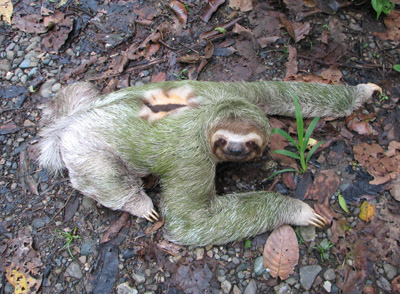
By the end of the day I had completely satisfied my sloth-sighting quota because after a while we got our sloth-eyes on and had to but look up into the forest canopy and there one would be, dangling under a branch. By far the most amazing sloth encounter, however, was when we were walking down a dirt road on the edge of the park. I heard a rustle at the side of the road and a sloth all but tumbled down the embankment onto the road. Right in front of me! We had earlier overheard a guide explain that sloths are very easy to sex—the males have a black dot on their backs and the females don’t; this was obviously a male. “Black dot†is something of an understatement too: this thing is five inches long and looks like an evil eye; the fur is also a different texture and length. Anyway, this sloth just plopped down onto the road, looked up at us, then continued on across the road, utterly unconcerned by me or by any potential traffic there may be. What kind of self-preservation is that? And, while they may move slowly through the trees, they definitely move with finesse; on the ground is another story entirely. He lurched and tummy crawled with his long arms and short legs and those freaky curved claws across the gravel. We self-importantly escorted him across, Joshua shooting photos the entire time. Every so often, he’d swing his head over without breaking stride and give us a mild look. Finally when we got to the other side, he pulled himself up the first vertical thing available and was back in the trees.
I find it difficult to believe, but more than one guide told us that sloths come down out of the trees to go to the bathroom. They climb down, dig a hole, poop (slowly), then go back into the trees. During this time they are of course a sitting sloth for any predators, and they have all sorts of natural predators too: jaguars and other wild cats, big snakes, dogs, taxicabs, etc. I would think that tree-poopers would have been selected for by now so whatever purpose an energy-taxing and life-threatening ground-poop fulfils must be of utmost evolutionary importance.
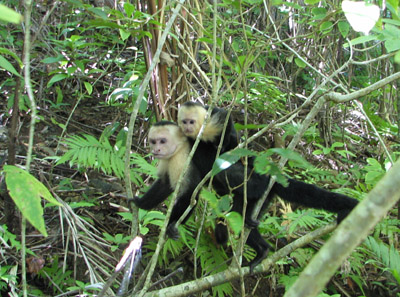
We didn’t see the squirrel monkeys again this day but we did see a large group of white-faced monkeys. These guys are a real crowd-pleaser; they come blitzing through en masse and they are ornery, snatch things from the tourists and each other, run up and down the trees picking at twigs and chewing on leaves, and from time to time, screech loudly and make everyone jump. We chatted with one of the guides while we waited out a white-faced monkey squall and he said that they were the most destructive of all the animals in the park; they tear stuff up, they harass the other slower animals (sloths), and they can get aggressive when stupid humans feed them snacks.
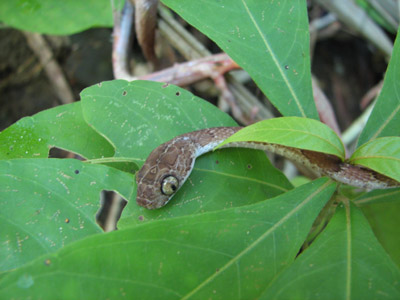
We watched one monkey find a thin brown vine snake, then bite into the middle of it, tearing off strips of meat. He ate only a few bites and then tossed the flailing snake aside (no regard for the starving monkeys over in India). The snake was alive but probably not for long. It was a pretty and very delicate little snake.
We also saw howler monkeys, TWO-toed sloths (sleeping in a tree; these guys are nocturnal and evidently more aggressive than their three-toed Swedish-chef cousins), an abunti (rodent of unusual size), iguanas, jesus lizards (those guys that run on water, like in Wild Kingdom), long-nosed bats (roosting in the tops of the poisonous trees), many morphos and other insects, coatis, raccoons, and a family of deer.
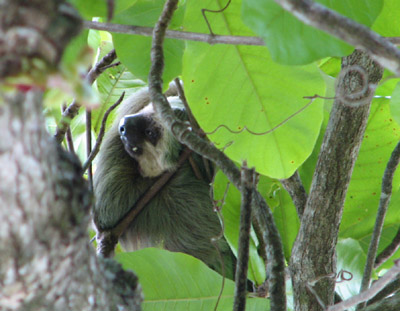
[Two-toed sloth; from this photo he looks downright scary.]
